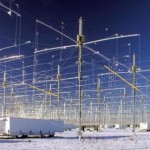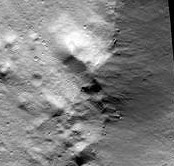Archive for December, 2011
Off the Beam: Did a U.S. Radar Station Disable Russia’s Mars Probe? [via SciAm]
Thursday, December 22nd, 2011Soon after the ill-fated Phobos-Grunt spacecraft stalled in Earth orbit, a former Russian official implicated “powerful American radars” in Alaska. Is there a basis to the claim, or is it just scapegoating?
By Jim Nash | Wednesday, December 14, 2011 | 32
After 19 attempts over 51 years, Russia has yet to chalk up a fully successful mission to Mars. That includes its ambitious Phobos–Grunt probe, launched November 8 from Kazakhstan and now stranded in low Earth orbit. Unable to regain control of the spacecraft, the Russians now expect it to fall back to Earth around January 9.
Responding to shame over the nation’s Mars program, Russian President Dmitry Medvedev has threatened to criminally prosecute those responsible if possible. Soon after Medvedev’s comments, a former high-ranking Russian officer found a more convenient scapegoat in a remote Alaskan radar facility. But an analysis of the timing and physics involved shows that there is little basis for the claim.
Phobos–Grunt was to retrieve soil (“grunt” in Russian) from the Martian moon Phobos and return it to Earth for study. But the rocket engine intended to boost the spacecraft into a higher orbit failed. The probe itself has since communicated only sporadically with ground stations, and even then it has murmured only unintelligible noise.
To Lt. Gen. Nikolay Rodionov, a retired commander of Russia’s ballistic missile early warning system, U.S. technology could have caused the rocket malfunction. In a November 24 interview with the Russian news agency Interfax, Rodionov said “powerful American radars” in Alaska “could have influenced the control systems of our interplanetary rover.”
Rodionov was quoted saying the U.S. wants to use the ionosphere as part of its missile defense, although he did not elaborate. A subsequent article in India’s The Hindu expanded on Rodionov’s statement, indicating that he was likely referring to the U.S.’s High Frequency Active Auroral Research Program (HAARP) observatory established in 1993.
The HAARP research station sits on an Air Force–owned site in Gakona, Alaska, and falls under the aegis of a number of federal and state agencies, primarily theAir Force Research Laboratory’s Space Vehicles Directorate. HAARP scientists have developed the project and the site’s instrumentation with help from several U.S. universities and educational institutions—in particular, the University of Alaska Fairbanks.
HAARP performs active and passive radar experiments on the ionosphere, a layer of charged particles stretching from 50 to 1,000 kilometers above Earth. The main goal is to better understand the layer, which has been used almost since the invention of radio to bounce signals far past the horizon, extending a signal’s range. The ionosphere does not always reflect signals in a predictable manner, however, which makes it a bit of a gamble for those wanting to use it to communicate critical information. Increasing, standardizing or augmenting that effect could have potent commercial and military applications, such as potentially using reflected signals to probe underground or underwater and even to communicate with submarines.
Given HAARP’s main goal of studying how signals are reflected, in the hopes of improving long-range communications, the station fires a radar beam to excite a localized patch of the ionosphere and uses passive devices in Gakona and elsewhere to examine the effects. HAARP scientists essentially are examining the resonant interaction between the radio waves and charged particles. HAARP “is like sticking your finger in a river, and by watching the water flow around your finger you can learn things about the river,” such as its flow speed and its temperature, says Morris Cohen, a research scientist at Stanford University whose Ph.D. thesis was about HAARP experiments.
Whereas similar radar facilities exist in Norway, Russia, Peru and other locations, HAARP is one of the most powerful. Its Ionospheric Research Instrument (IRI) puts out a maximum of 3.6 megawatts sending signals at 2.8 to 10 MHz—powerful enough heat up a small (on a global scale) but measurable part of the ionosphere. The energy being added to the area can be measured in several ways, including gauging how much the section expands when it is heated and how it glows. Both effects are incredibly subtle, requiring highly sensitive equipment to record it, and they’re orders of magnitude less powerful than the effects of ordinary solar weather that constantly bombards the ionosphere.
But is the transmitter powerful enough to have fried the electronics of Russia’s Mars mission?
The answer is categorically no, according to Craig Selcher, HAARP program manager with the Air Force Research Laboratory’s Space Vehicles Directorate at Kirtland Air Force Base, N.M. For starters, HAARP’s IRI has not been operated since September 3, he says.
But even if the IRI had been on during the early days of the Mars mission, the beam couldn’t have had any real impact on the craft. The beam’s energy, although strong enough to affect overflying airplanes, which have an operating ceiling of about 26 kilometers (in Earth’s stratosphere), is too diffuse by the time it reaches the ionosphere, part of the planet’s upper atmosphere. Phobos–Grunt’s orbit has been between 200 and 400 kilometers.
It turns out that the beam is indeed diffuse at that height. The maximum energy that Phobos–Grunt could have felt from HAARP would have equaled a power density of 1.03 milliwatts per square centimeter, according to Selcher. That is like shining a 60-watt lightbulb on the craft from 21 meters, he says. The sun, on the other hand, blasts the top of the atmosphere with an average of 135,100 milliwatts per square centimeter.
In fact, Cohen says, “HAARP routinely points itself at full power towards certain satellites” that monitor what happens at the top of the ionosphere above an IRI beam. He also notes that despite the relative density of low Earth orbit–satellites, HAARP has not damaged a single one.
None of these counterpoints is likely to allay the fears of the conspiratorially minded, who have argued that HAARP’s technology is a U.S. weapon used to trigger earthquakes (including the recent ones in Japan and Haiti), create destructive weather, and even control minds. So charges like Rodionov’s will continue unless, that is, HAARP can control minds. In that case, things will quiet down soon enough.
NOTE: This is a repost from Scientific American. See the original SciAm post here.
Vesta Is Like the Monolith In 2001: A Space Odyssey (Absolute Proof!)
Wednesday, December 21st, 2011Just in time for 2012, the year voted most likely to be our last — incontrovertible evidence that humanoid aliens have visited our humble solar system! I hope you are ready because this is going. To. Blow your. Mind.
Our journey starts on the giant asteroid Vesta, which is being visited as I write by a NASA space probe.
But first, how did we get to this point, where we can now KNOW we have space-traveling brothers (and, I’m sure, sisters)?
Eons before advanced civilizations came to Earth to communicate with us through tats on our corn fields, less sophisticated but no less brilliant aliens toured the neighborhood. I don’t want to insult any greys or reptilians or other space travelers who might be reading this, but their great great great great grandfather aliens were still in their own Stone Age back then.
The first message we found from that earlier age set the world on fire! A U.S. Martian probe in 1976 photographed what has come to be known as The Face on Mars:

She gazes without judgment on humankind. Has anyone else noticed that she seems to be riding on the back of a flying serpent?
It’s the dispassionate face of wise openness and acceptance. The face — two miles long — was there to tell us we are not alone; that utopia with kindred spirits will happen; that off Earth, at least, super-straight hair is cool (Yay Fiona Apple!).
I don’t surf, but I read surfing magazines at CVS while waiting for my prescrip–never mind that. I’ve seen this Face before in the stoic, adventuring visages of those who, maybe like the aliens, know how to stand face to face with nature and ride it without taming it. I’m talking about surfers, though not the pothead or dropout surfers. The Knights of the Lady Blue.
Who could argue that this valiant towhead is not the offspring of the beings who created The Face on Mars? Besides you NASA scientists. It’s a shame that Christopher Hitchens has left this astral plane, because these two photos — plus the BOMBSHELL picture that I’m going to show you in a minute — would have easily won him over to my side of this argument. As it is, this evidence will probably shock all of NASA. To. Death.
Who knows. Maybe these visitors are more like Solder Surfer* than anyone imagined.
* That’s not the comic’s real name. Due to court injunctions, copyright issues and a stay-away order protecting Stan Lee, I am forbidden from writing the name. (Rhymes with Lilver Lurfer. Sucker! You can’t get me for that, Stan!)
I concede that there are similarities between The Face on Mars and this picture on the left. But don’t be fooled. There’s no way to know that NASA didn’t photoshop this image together. Think for a second: What cat would sit still long enough for a lime page-boy hairdo?
I shouldn’t have brought up that cat photo, I know. It’s a distraction. I should know to “stay on target” (Which movie is that from? Hint: It’s my favorite. Another hint: It’s a space movie. Star Wars. You were never going to guess it.)
OK, OK. Here it is. We are not alone. Your honor, I submit Exhibit 2001:
See? Centered in the top third? This was taken by NASA’s Dawn mission to the asteroid belt. It’s on Vesta, a huge asteroid.
There’s a bright left profile. Bold. Resolute. Strong. But there’s also the demur (possibly devious, we should maybe be careful…) dark side, too.
First Mars, then Vesta. What could it mean? A trail of breadcrumbs? I’m not saying it is. I’m just saying it is a trail of breadcrumbs to someone out there, certainly, who’s
really scientifically smart. Let’s train some telescopes on Pluto.
This is a hallowed and auspicious moment. I’ve proven something that’s going to stand every ivory tower, every religion and most of the unions on their ears! Hollywood, find a new fiction to peddle, because this one is science fact!








